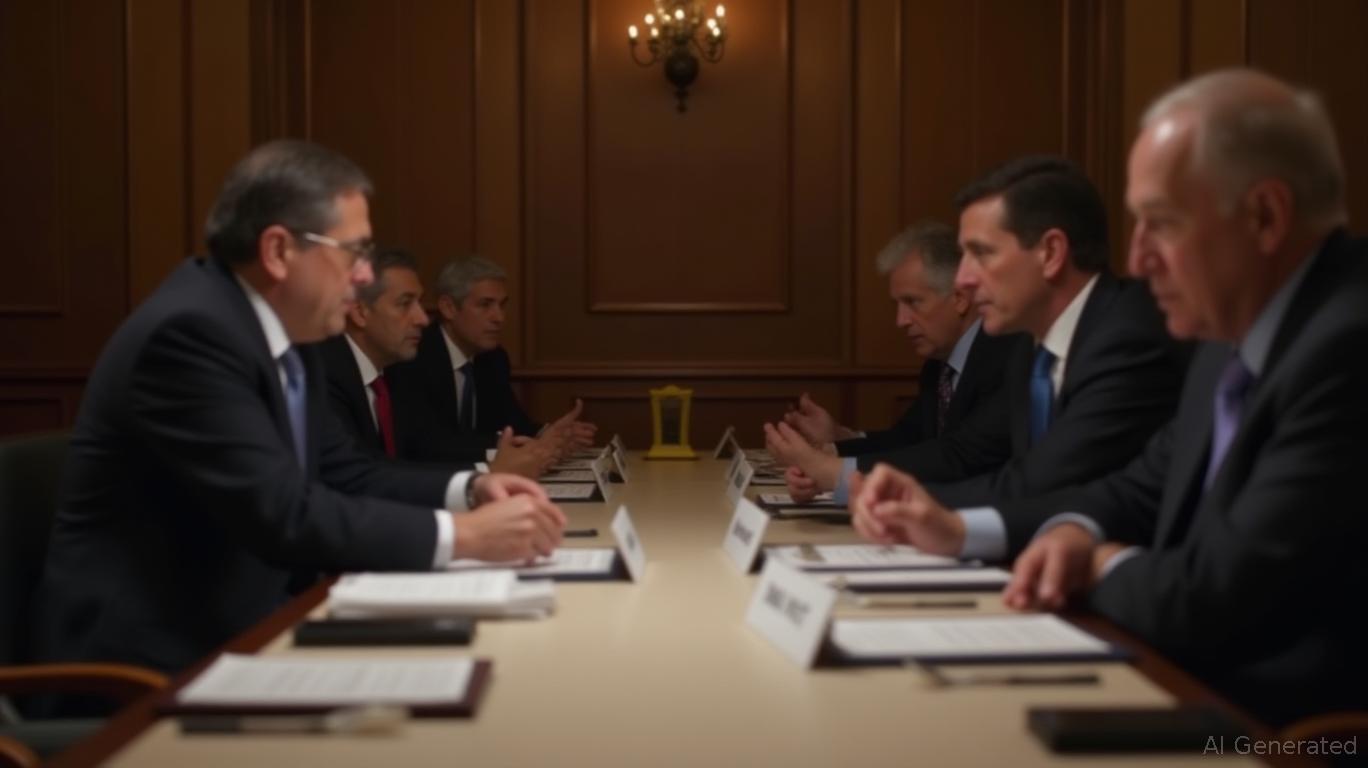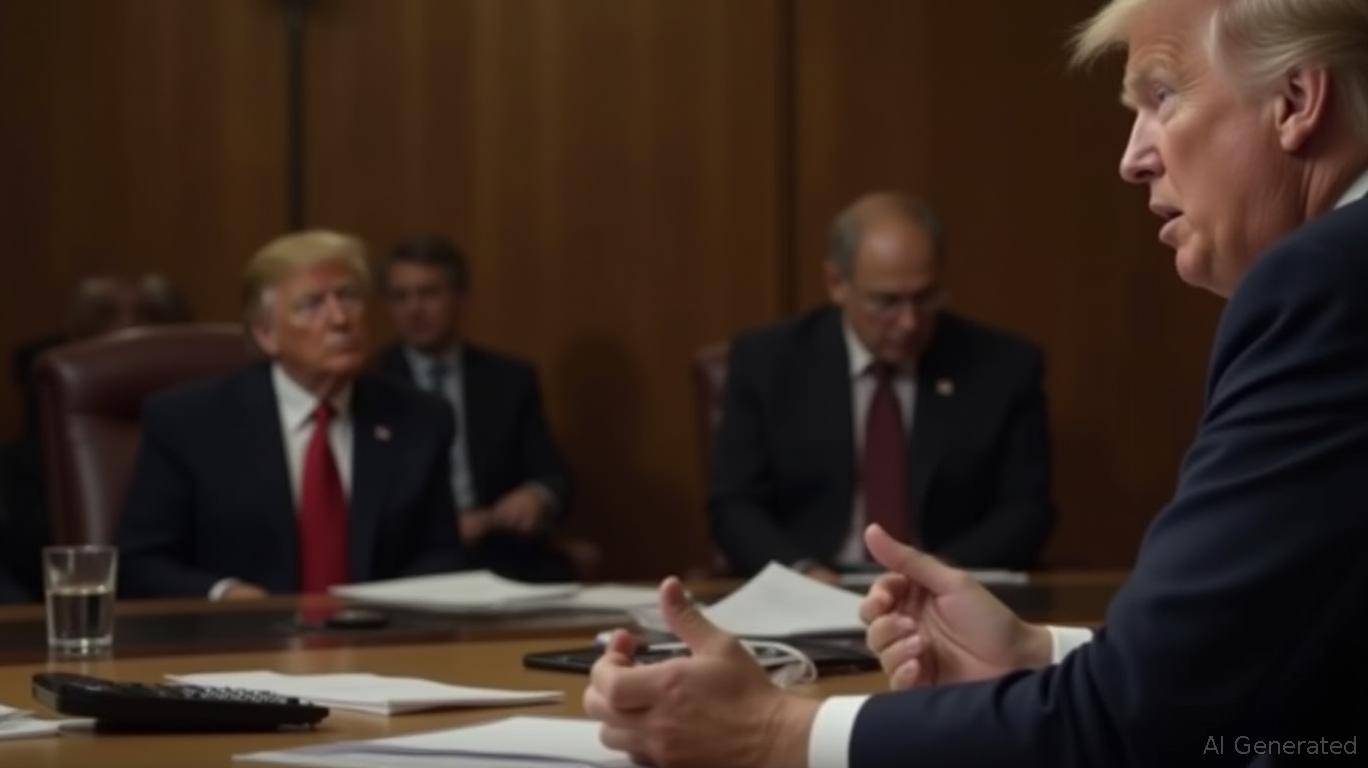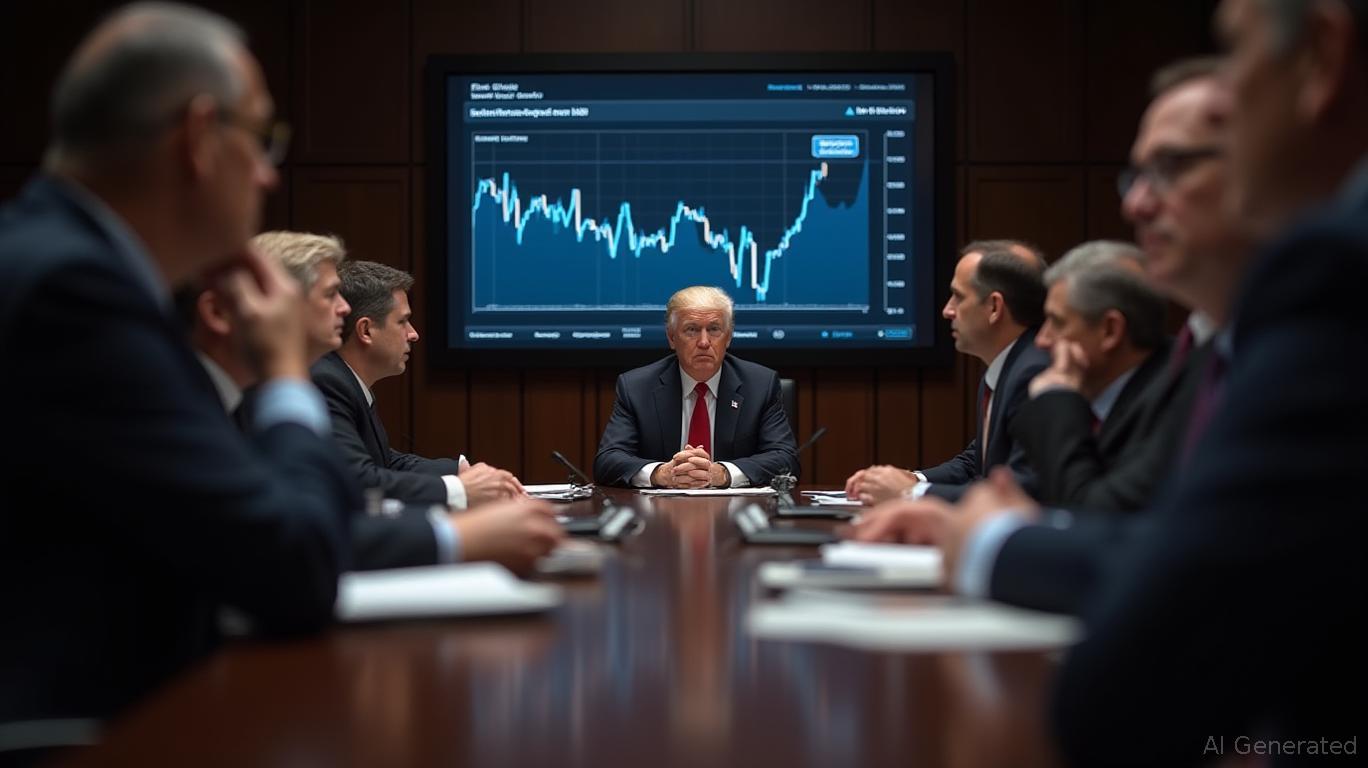U.S.-China Trade Agreement Calms International Markets, Prevents Further Tariff Increases
- U.S. and China agree to delay 100% tariffs on Chinese goods and extend rare earth export controls by one year, averting Trump's November 1 threat. - Framework includes China resuming U.S. soybean purchases, addressing fentanyl supply chains, and potential AI cooperation with U.S. tech firms like Nvidia. - Preliminary deal stabilizes trade tensions ahead of Trump-Xi summit in South Korea, though unresolved issues like Taiwan and Jimmy Lai's case remain. - Global markets benefit from reduced trade uncertai
China and the United States have come to an initial trade understanding that will prevent a planned 100% tariff increase on Chinese imports and postpone controversial restrictions on rare earth exports, U.S. Treasury Secretary Scott Bessent said, as cited by
Bessent called the framework "highly significant," noting that China has agreed to put off its expanded rare earth licensing rules for another year while reconsidering the policy,

The deal also involves China agreeing to restart large-scale purchases of U.S. soybeans, a major priority for American agriculture, and to address supply chains linked to fentanyl that contribute to the opioid crisis in the U.S., according to
Chinese authorities have been reserved, refraining from sharing details about the breadth of the deal. Li Chenggang acknowledged that both sides had reached a preliminary agreement to extend the current trade ceasefire, set to expire November 10, and to continue talks on fentanyl and export controls, The Economic Times noted. The results of these negotiations are crucial for the global economy, as the U.S.-China trade partnership is a key pillar of worldwide financial stability.
Experts believe the agreement demonstrates both countries’ desire to prevent further economic shocks. Economists at ING expect a favorable outcome, pointing to a "softening of language" and Trump’s public statements about achieving a "fantastic deal," according to the
The framework also paves the way for future collaboration on artificial intelligence, with Bessent mentioning ongoing talks involving U.S. technology companies like Nvidia, as reported by Cryptopolitan. Nonetheless, larger geopolitical challenges—including the Taiwan issue and the detention of Hong Kong media mogul Jimmy Lai—remain unresolved and could complicate future relations.
Trump and Xi are scheduled to meet in South Korea on Thursday, with additional discussions planned in both China and the U.S. in early 2026, according to Cryptopolitan. Whether this framework succeeds will depend on the leaders’ ability to turn these initial agreements into concrete, enforceable measures. For now, the suspension of tariffs and rare earth disputes provides temporary relief for companies and investors navigating one of the world’s most significant trade relationships.
Disclaimer: The content of this article solely reflects the author's opinion and does not represent the platform in any capacity. This article is not intended to serve as a reference for making investment decisions.
You may also like
"Brazil and United States Seek Trade Agreement as World Turns Toward Protectionism"
- Brazil's Lula and Trump discussed a trade deal during their ASEAN summit meeting, with Lula claiming Trump "guaranteed" a resolution despite U.S. tariffs on Brazilian goods. - The U.S. imposed 50% tariffs in July over legal actions against Bolsonaro, which Lula called "mistaken," presenting a written defense during talks. - Lula highlighted Brazil's $410B trade surplus with the U.S. and urged Trump to leverage Brazil's regional influence, including Venezuela diplomacy. - Brazil resumed chicken exports to

Fed Balances Delicately as Trump Urges Rate Reductions While Inflation Concerns Persist
- FOMC to cut rates by 25 bps in October 2025, second cut this year, targeting 3.75%-4% range. - Cooling labor market and subdued inflation drive decision, with manufacturing/retail data to shape future adjustments. - Consumers see limited relief: mortgage rates near 6.34%, credit card rates at 20.03% remain largely unaffected. - Trump pressures Fed for aggressive cuts, but officials warn against inflation risks from tariffs and immigration policies. - Markets expect 1% rate cuts by 2026 end, with mortgage

XRP News Today: Indian Judiciary Acknowledges Cryptocurrency as Property, Establishing a Landmark for Investor Protections
- India's Madras High Court ruled crypto as property, blocking WazirX from redistributing a user's 3,532 XRP to offset hack losses. - The decision reinforces legal protections for digital assets, setting a precedent for investor rights and clearer regulatory frameworks. - By rejecting WazirX's "socialization of losses" plan, the court emphasized crypto custody distinctions and trust obligations for unaffected assets. - Experts highlight the ruling's impact on India's crypto ecosystem, aligning with global

Fed Lowers Interest Rates as Data Remain Unclear Due to Shutdown, While Focus Shifts to Tech AI Profits and Trade Agreement
- The U.S. Fed cuts rates by 25 bps for the second consecutive meeting, signaling potential policy easing amid a government shutdown and global trade tensions. - Big Tech earnings spotlight AI monetization, with Microsoft's Azure and Amazon's AWS under scrutiny as $420B AI spending by 2026 drives growth but risks margin pressures. - A preliminary U.S.-China trade deal delays Trump's 100% tariffs and resumes soybean purchases, marking de-escalation after months of escalating tensions. - Fed's rate cut coinc
